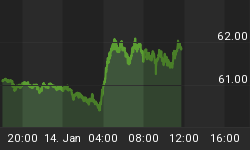CALGARY (KWR) May 10, 2006 -- Some of the largest construction projects on the planet are currently underway in Fort McMurray, Alberta. Canada's oil sands, long recognized as a "fuel of the future", are no longer a theoretical energy source but a critical component of global energy supply. These giant accumulations of tar and sand cover an area greater than the state of Florida. The estimated reserves of these accumulations exceeds 174 billion barrels of oil, second only to the oil riches of Saudi Arabia. Construction of these projects requires huge amounts of capital. Over 100 billion dollars will be invested on oil sands projects over the next 10 years.
Oil sands production is far more complex than producing oil from conventional wells where the oil flows nicely into pipelines and tankers before shipping to the refinery. It takes approximately two tons of oil sand to produce a barrel of oil. Digging up the sand requires giant truck and shovel operations.
One critical component of a successful multi-billion dollar oil sands project is a runway. Although construction materials must be delivered by road and rail, the people required to assemble them do not.
Given the tightness of the Alberta labor market, companies are looking at creative solutions to find skilled labor. Canadian Natural Resources' Horizon project will require 6000 trades people at the peak of its construction. Workers for these vast operations will be flown in from Atlantic Canada and the interior of British Columbia. The addition of a runway opens up the entire Canadian labor market to be consumed by Fort McMurray oil sands projects. Workers from Atlantic Canada will be taking a 6-hour commuter jet trip to complete their work shifts. This compares favorably to the 5-hour bus trip from Edmonton.
Satisfying the oil sands labor market requires global solutions. Engineers from South America, laborers from Mexico and welders from China are all finding themselves sucked into the giant swirling labor pool required to get oil sands projects off the ground.
Meanwhile, Canada's conventional oil and gas industry is in overdrive. The Petroleum Services Association of Canada (PSAC) estimates that 2006 will see over 25,000 wells drilled in Canada representing a 6% increase from last year. Drilling crews are in high demand as contractors don't want their equipment sitting idle and oil companies are willing to pay up to get their wells drilled.
In Calgary, the heart of Canada's energy patch, the demand for labor shows up in the near ubiquitous postings for staff in retail and fast food service positions. One national chain had to temporarily shut down one of it's restaurants due to a lack of workers. Reliable young workers can make a 6-figure income in Fort McMurray. In Calgary, the oil patch is willing to pay higher wages than other industries for technical support positions.
The exploration, discovery and exploitation of ore deposits and oil and gas fields require a strong contingent of engineers, geologists, and geophysicists. During the last trough in the commodity cycle there was little demand for these professions. Much of the available work was related to environmental projects, cleaning up the toxic spills from old mines and refineries. Although some commentators interpret this "new breed" of professionals as having a strong environmental consciousness, the real truth is they followed the money and found the trail ending up at remediation instead of exploration and exploitation.
Demographic data show that the majority of the resource related workforce is in the 40-60 year age group. There are very few resource professionals in the 20-40 year age group (and that age group is skewed towards environmental expertise) and it is expected that 40% of professionals will be retiring over the next 10 years. Enrollments in resource related university programs have been at low levels for decades. Keeping in mind that engineers, geologists and geophysicists require at least 4 years of university education and several years of experience before they become competent professionals one can see the demographic squeeze play coming. At a time when resource related technical expertise is needed most, it will be in the shortest supply.
This developing demographic squeeze is going to influence resource investments and one should expect cost overruns and delays for mining, pipeline, refinery, upgrader and oil sands projects. There is a shortage of the skilled labor required to build these projects and to field experienced drill crews. The expertise required to find and develop new mineral deposits and oil and gas fields is also lacking. The commodity bull market has a bright future because it is going to be exceedingly difficult to increase commodity supplies with current manpower levels.
















